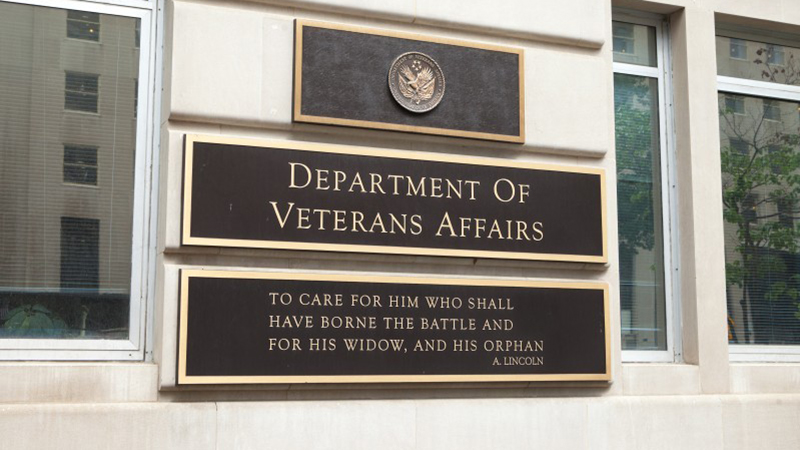
It’s one of the centerpieces of the Department of Veterans Affairs’ transformation effort. But the so-called strategic sourcing initiative has some front-line IT employees worried that it’s really just a code word for outsourcing their jobs to the private sector.
Strategic sourcing is at the heart of VA’s new IT enterprise strategy, and leverages the new authorities granted to chief information officers under the Federal Information Technology Acquisition Reform Act (FITARA) to take advantage of the agency’s buying power in the IT marketplace and drive better performance from its many IT contractors. It also refocuses VA on buying best-in-class commercial technologies rather than building custom systems.
But some career VA IT employees fear that strategic sourcing, along with many other organizational realignments undertaken by CIO LaVerne Council, represents a deliberate effort to minimize the contributions of Federal IT employees in favor of bringing in more contractors.
“Many are speculating that what we’re seeing under this CIO is a planned slow strangulation of the current workforce so we can be replaced with contractors, and it’s sad that there’s nothing to suggest that’s not true,” a VA employee told MeriTalk. “The CIO’s lack of open and meaningful communication with her front-line workforce does little to ease those concerns, so what we’re seeing is the typical circling of the wagons at the facility level because of the unknown.”
“The worst possible job in the VA is that of the Facility CIO,” said a longtime VA IT employee, who, like others, pointed to significant morale problems among the rank and file.
“The regional service lines are constantly beating on you to do more with less and the facility people are constantly mad at you because you can’t do what they want you to do. This is where the rubber meets the road and it’s the least appreciated and most understaffed area in the VA. It is starting to populate this level with contractors,” the source said. “Most IT staff believe this is where the VA is headed, to outsource the workforce. Contractors are used in the D.C. area to do the actual work. The typical IT organization in D.C. has just enough VA IT employees to exercise management over the mass of contractors.”
The IT acquisitions team, led by Luwanda Jones, became the first fully staffed function in the strategic sourcing organization. “As this team continues to oversee the effective execution of our IT acquisitions for the rest of the fiscal year, they will also play a vital and pathfinding role in the formation of the strategic sourcing office,” wrote Council, in a June 10 email obtained by MeriTalk. “Until our DCIO for strategic sourcing is hired, Luwanda will report directly to me.”
But a critical part of the messaging contained in that email seems to not be reaching VA’s IT employees around the country. The Strategic Sourcing office “will leverage the best of both our VA staff’s expertise as well as the innovation of our external partners to deliver the absolute best solutions to our Veterans,” Council wrote.
“This transformation of OI&T will greatly impact the service to veterans trying to receive compensation benefits,” said another VA IT employee. “This will reduce the staff levels at the Regional Offices, creating delays in servicing employees with technical issues, increasing delays in processing veterans claims for benefits. OI&T employees are not being informed of any of this transformation process, creating labor issues.”
In an exclusive interview with MeriTalk, Kai Miller, the new chief of staff in the Office of Information and Technology, acknowledged that OI&T needed to do a better job communicating the key role that experienced, career Federal IT employees will play in the enterprise strategy moving forward.
“The expertise of our VA employees is critical to the successful establishment of the strategic sourcing initiative as well as the rest of our transformational elements,” Miller said. “OI&T is working hard to transform the way we collaborate with our employees through our IT Strategic Communications team and our Employee Engagement Task Force, and the OI&T transformation strategy includes key goals associated with employee engagement and development. The only way change can be sustainable is by the truly engaging our team, and we are excited about further developing ways we can build a compelling, rewarding environment.”
Of the 16,000 employees that make up OI&T, half are contractors working on one or more of the agency’s 3,000 active contracts. The number of contractors—particularly those working in and around VA headquarters in Washington, D.C., is a major point of contention for some VA IT employees. One source referred to them as “a parasitic infestation.”
McLean, Va.-based Booz Allen Hamilton—a contractor with a large presence throughout VA—won a $115 million contract in February to extend technology services to VA’s new Veterans Experience Office (VEO). In May, the company won part of the $22.3 billion Transformation Twenty-One Total Technology Next Generation (T4NG) acquisition program—a key component of the MyVA transformation initiative.
Although VA officials say Council has made a concerted effort to communicate the intent behind the agency realignment and transformation efforts, low morale remains a constant challenge for some.
“Morale in IT is so low you have to look up to see whale poop,” wrote one VA reader. “Listen to eight contractors tell you how, when, and where to do something else. I wouldn’t wish a VA IT job to my worst enemy. I have one more year in this h3ll hole and I’m out.”
